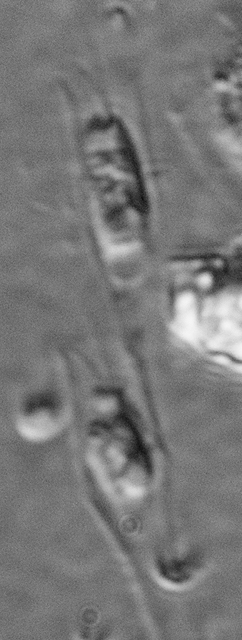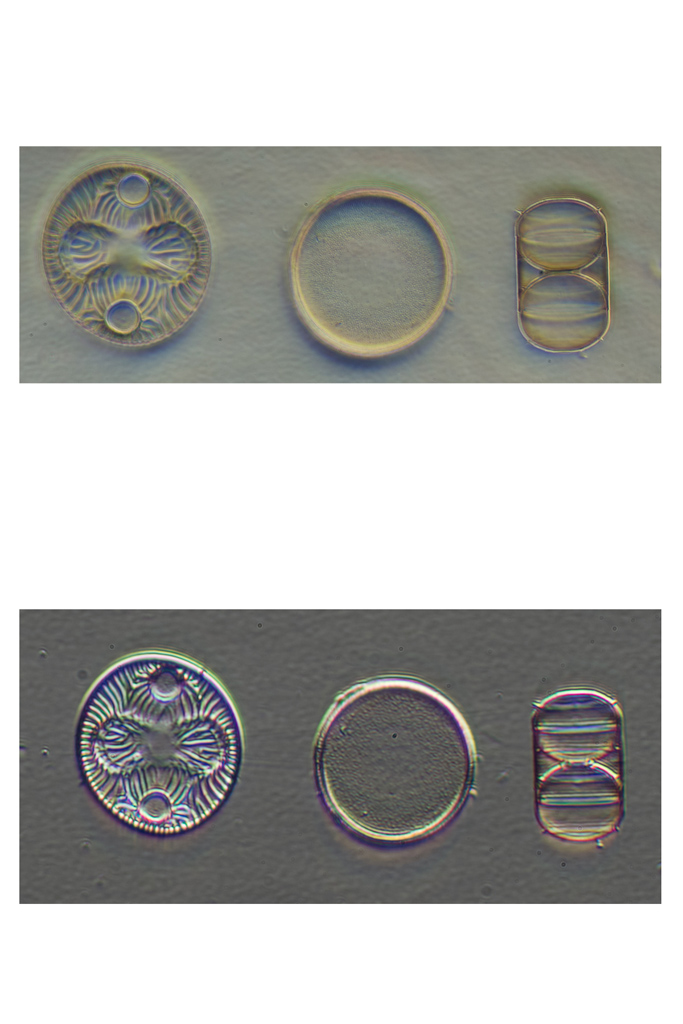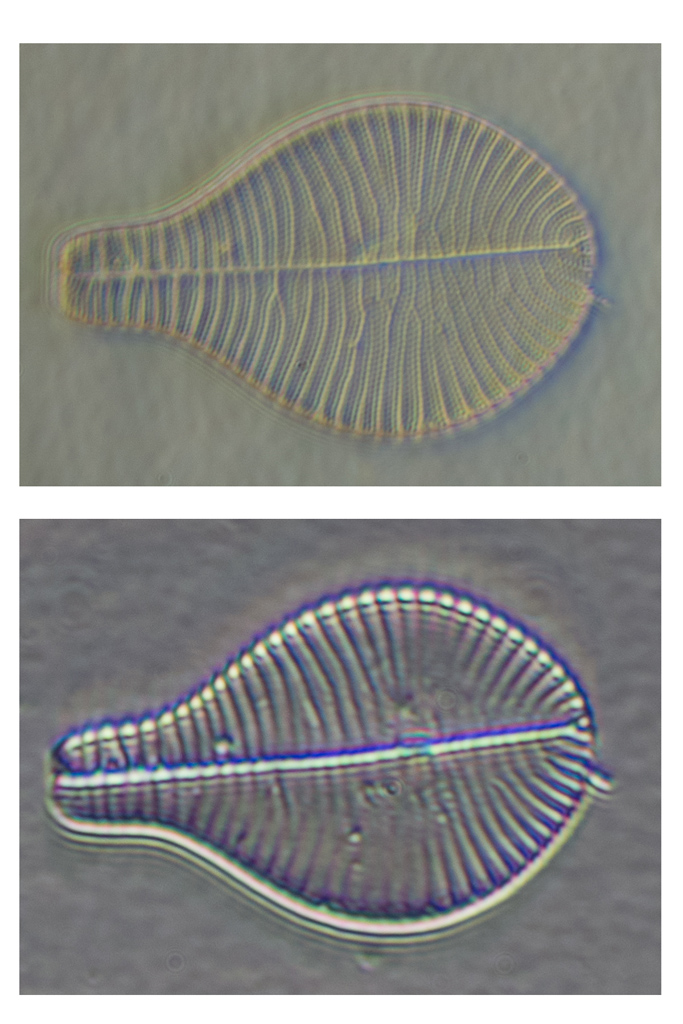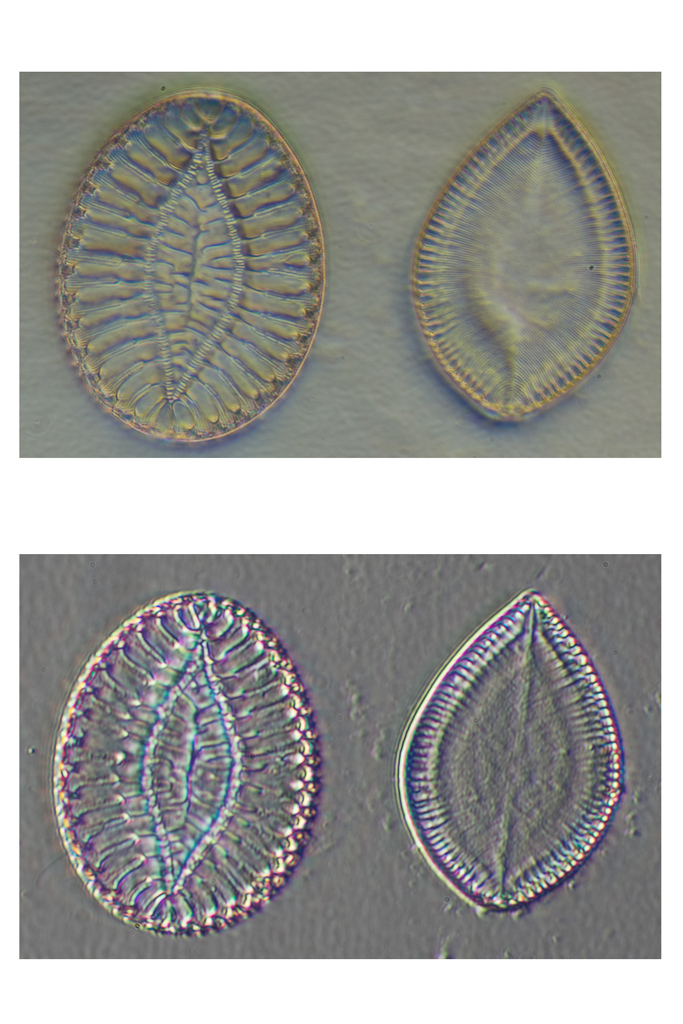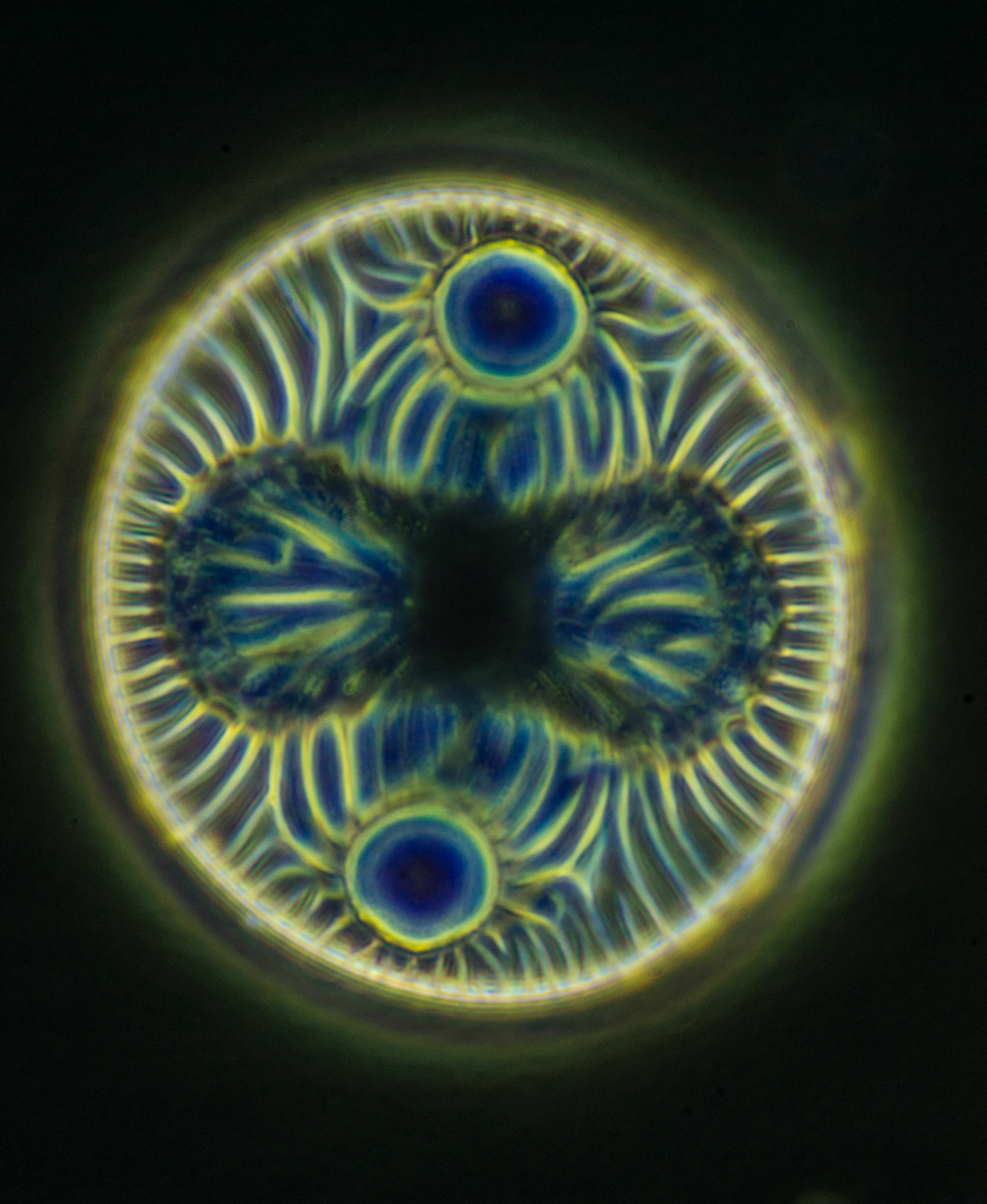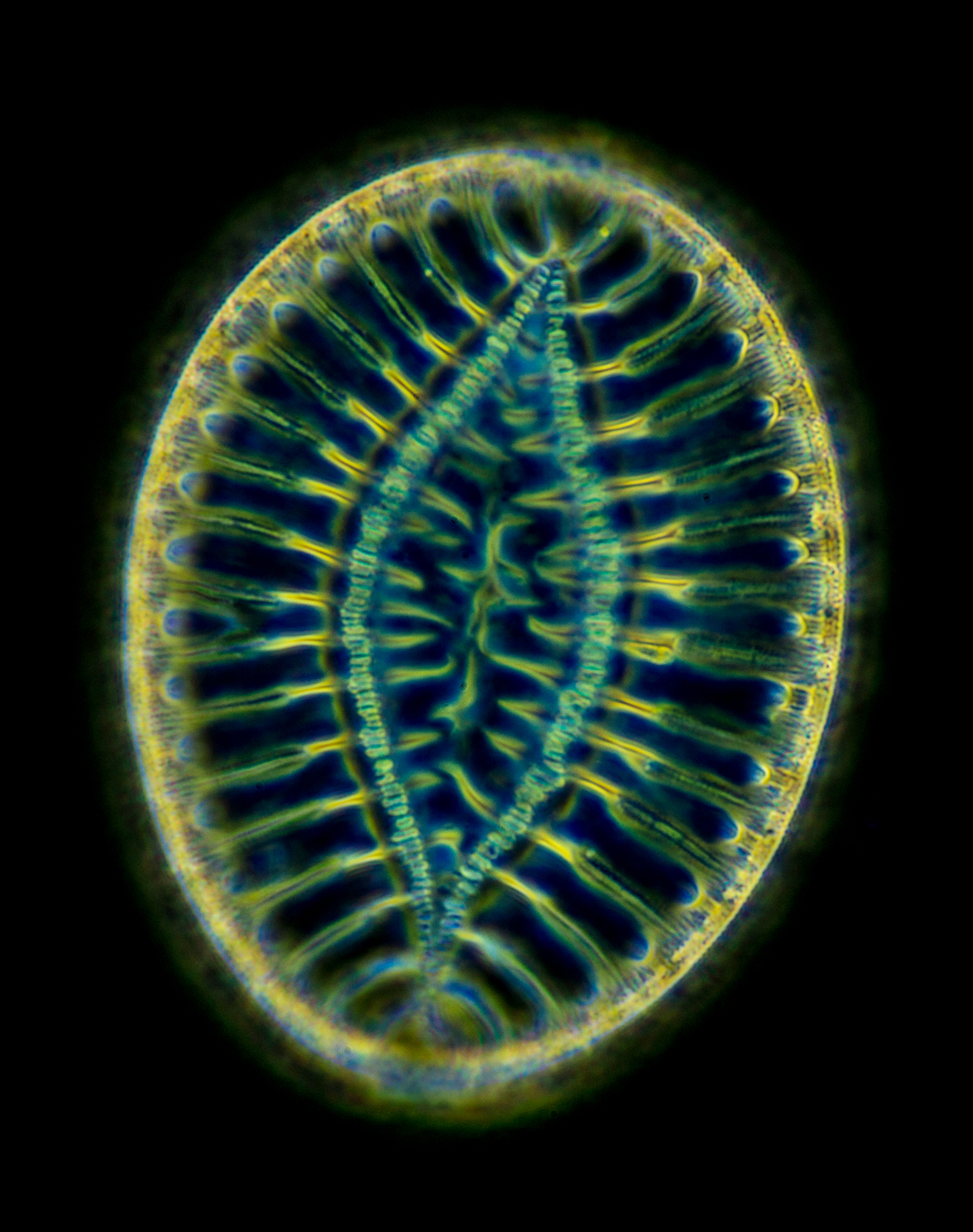I used the Heine but with a phaco objective. Might be interesting to image them with the Pv 25x as it's phase ring is at higher NA than the phaco.
Great idea about trying offset COL. Maybe I'll find some time for that and the Pv.
I didn't mean to be comparing apples to apples here. This was my first point of curiosity with HMC. I'm starting to think about setting up HMC on the Diavert, but wanted to make sure I understood how it would perform first.
I have both a flip-top Leitz condenser and a Nikon 1.4 aplanat (with a Leitz dovetail). Either of this might be good options along with homemade condenser HMC masks.
Unfortunately, due to the large 'U' bracket on this particular HMC condenser, there wasn't enough room for my flash beamsplitter. Tried some protozoa, but without flash, the exposure times were too long for almost everything. I did manage to get a couple Dinobryan, but had to bump the iso to 500 at 1/15th sec, so it's not great. Also is a heavy crop.
